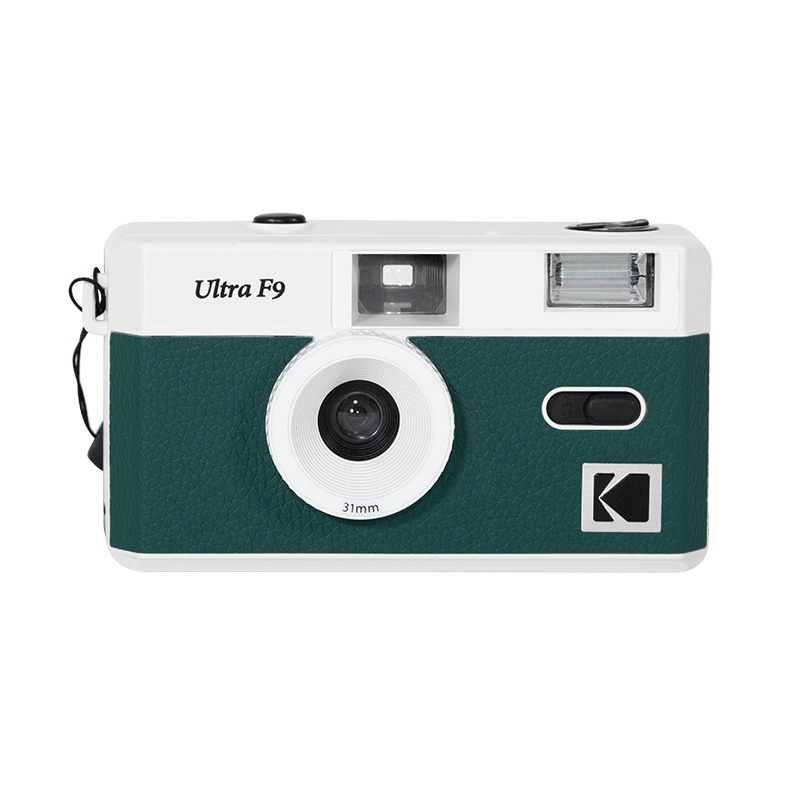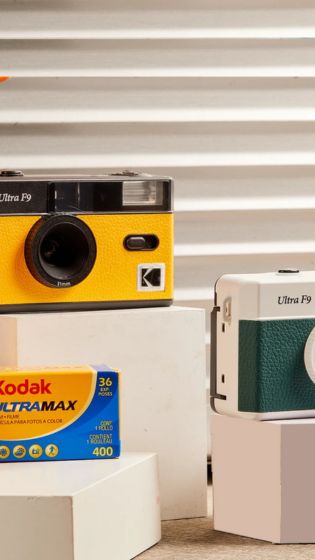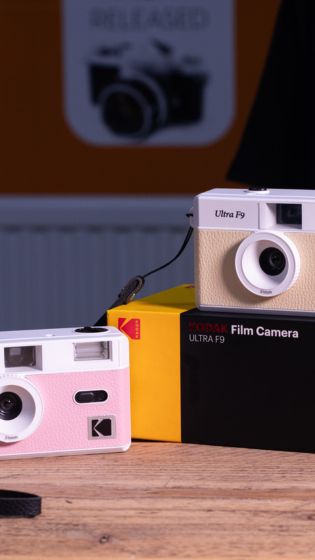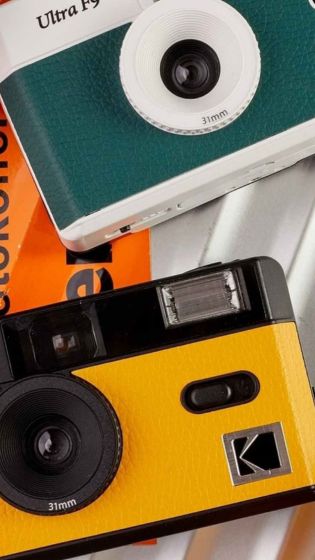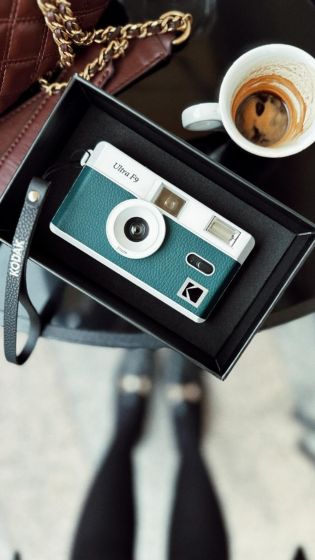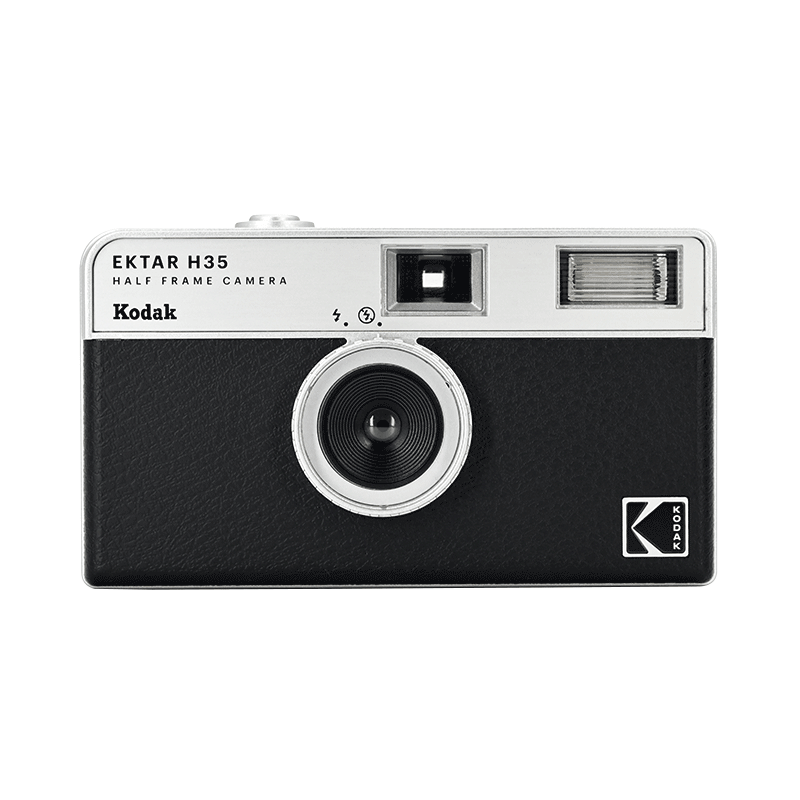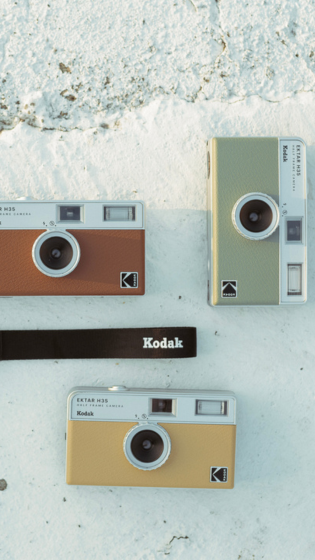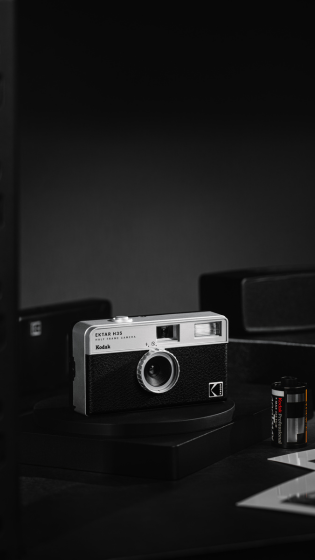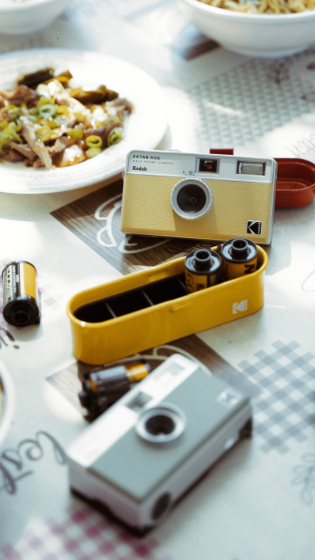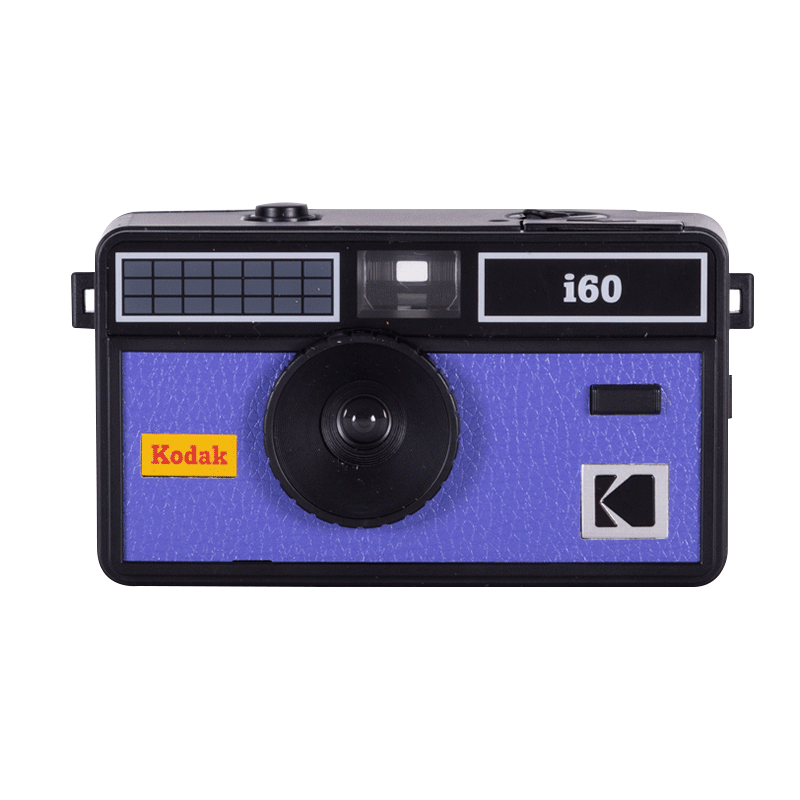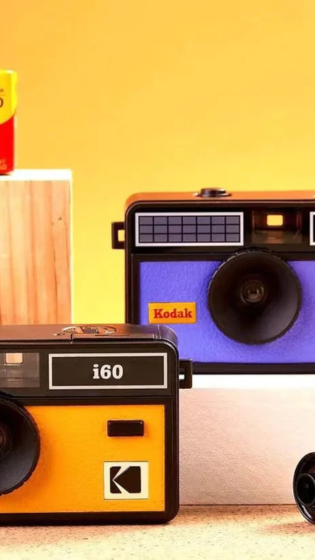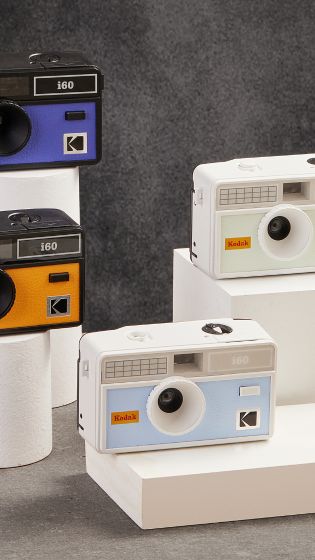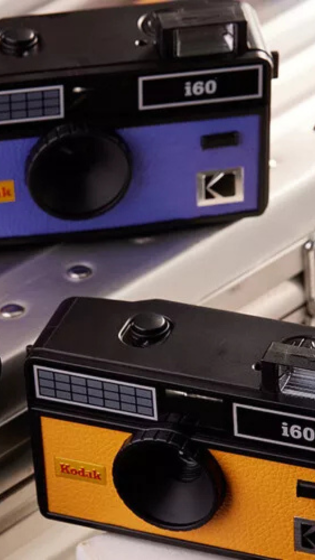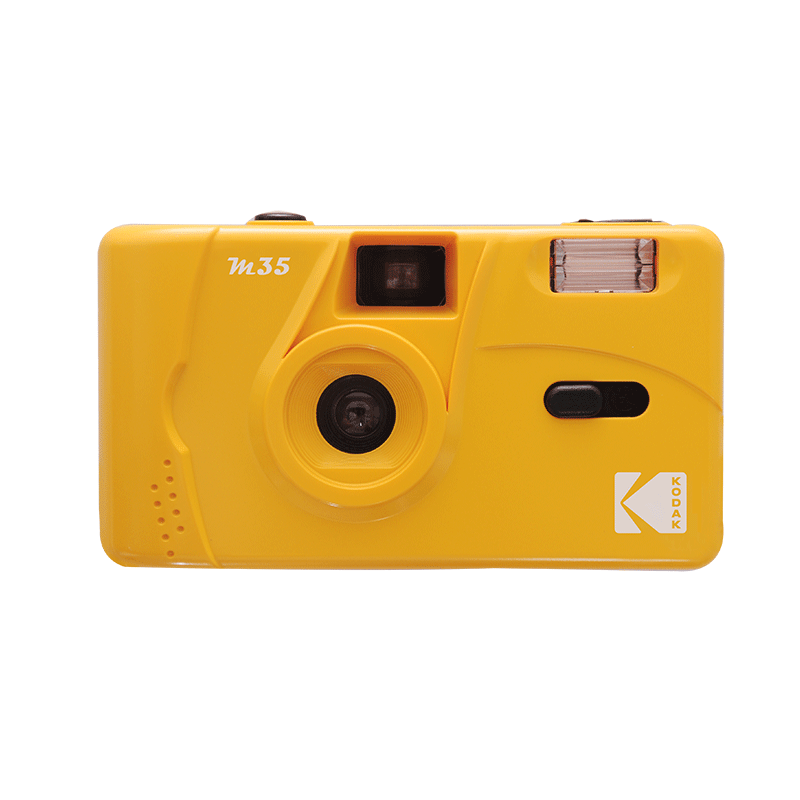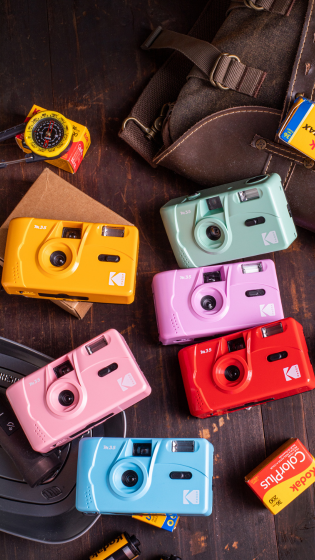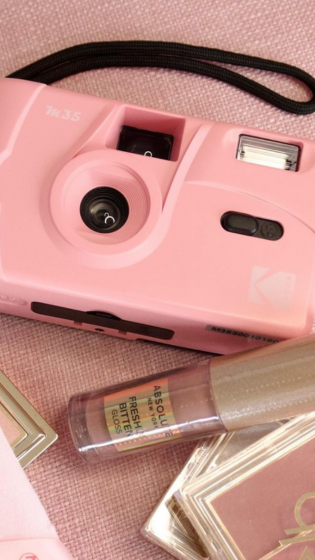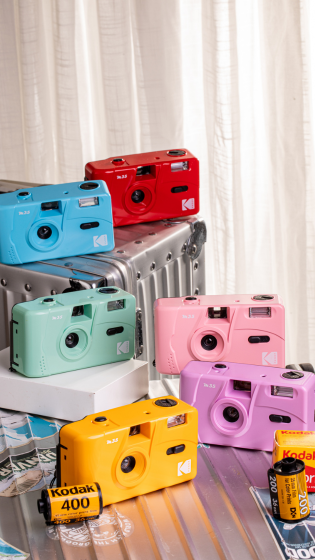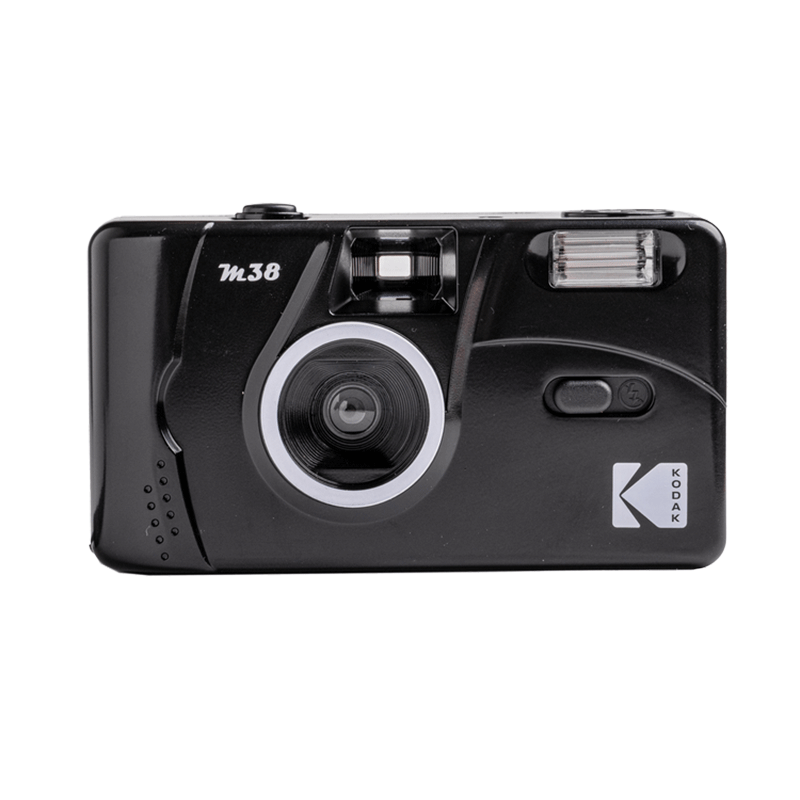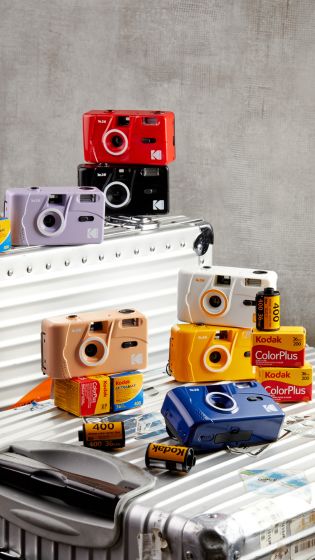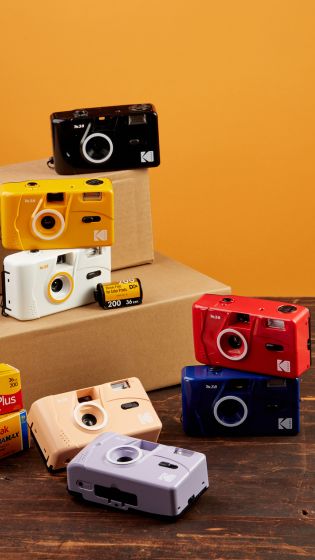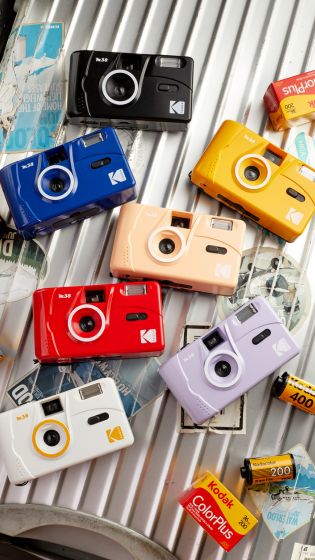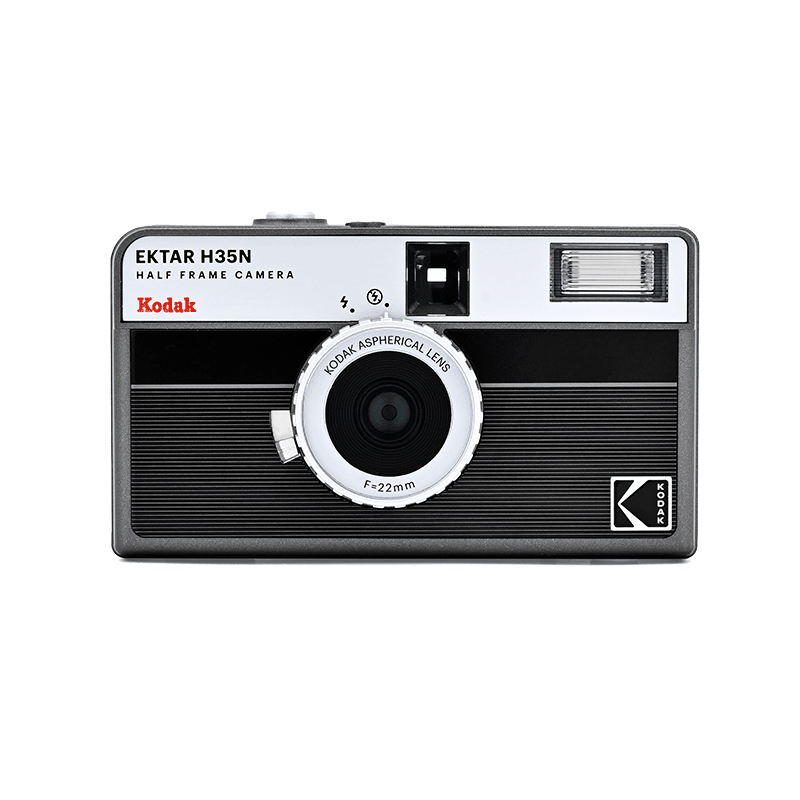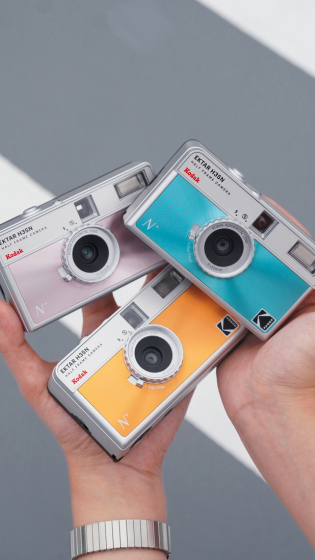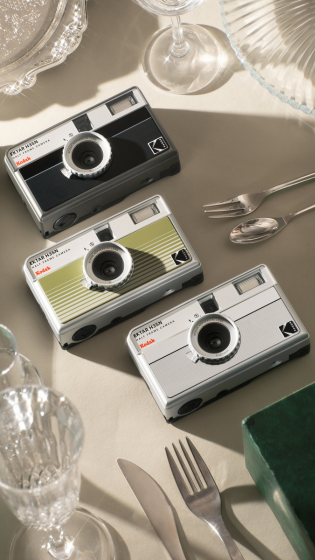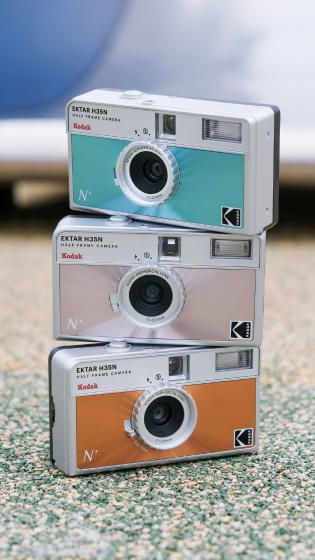
Which film camera should you choose ?
Film photography has recently seen a massive comeback in the photography world. At a time when we've all gone digital, people are once again being drawn to the authentic look and unique colours that film photography provides. It allows us to return to the early days of photography and the sheer pleasure of loading and winding our film before the exciting wait to see the developed results! Film photography suits amateurs and professionals alike thanks to its tactile and sensitive approach.
Kodak's here to help you discover or rediscover the joys of this nostalgic world. You've come to the right place to learn everything you need to know about film photography and Kodak's range of cameras!
What is a film camera ?
Film cameras go back to the dawn of photography! When we talk about film photos, we're referring to the type of snaps people took before the advent of digital devices. People often say film cameras were the precursors to digital cameras.
But it goes further than that, as they use a film rather than relying on integrated tech. Both digital and film photography require lining up a shot through a lens. However, with film photography, the image is imprinted on a roll of film inserted into the camera. Officially called 'silver halide', this film is made from plastic covered with silver salts that react to the light that comes through the lens. This causes a chemical reaction which slowly creates an image on the film and with it a unique shot!
Film photography relies on similar techniques to digital cameras in terms of sensitivity, aperture and speed settings. The main difference is the use of photographic film, which can be of a specific type for a particular result. For example, you can choose between colour or black and white film.
Unlike digital cameras, a roll of film has a limited number of shots: for example, in our catalogue, you'll find colour films that allow 24 photos. But don't let the limited number of photos put you off! Quite the opposite - using a film camera will deepen your understanding of photography, thanks to a more carefully-considered and authentic technique.
The much-loved rituals of film photography: because going manual is loads of fun
A lot goes on behind the scenes when it comes to film photography! The first step is to load the film into the camera. There follows the art of taking your shots before winding the film back and heading off to get it developed. Film cameras don't have LCD screens, unlike digital cameras. You can't delete and try again and that's the game-changer - each photo is unique, authentic and captures that very millisecond! Film photos each tell their own story, the one that was captured when you pressed the shutter.
Using a film camera requires several steps: choosing the type of film, loading it into the camera, taking the shot according to certain settings (composition, framing, exposure) and then, of course, the thrill of getting it developed! Quite simply, film cameras are about the manual pleasures of photography.
How are the films developed ?
After you drop off your film at the photo lab, it will be soaked in a series of tanks filled with different products: the developer, the stop bath and the fixer.
Next, once the film's negatives have been rinsed and dried, they're placed in an enlarger, which is a projector that increases the size of the photo. This essential step is carried out in a dark room, lit by an inactinic light (the famous red light!) that won't alter the negative. The film used in film cameras is incredibly light-sensitive, which is why each photo must be developed in total darkness: otherwise, the crystals on the film will continue to react and erase the image.







